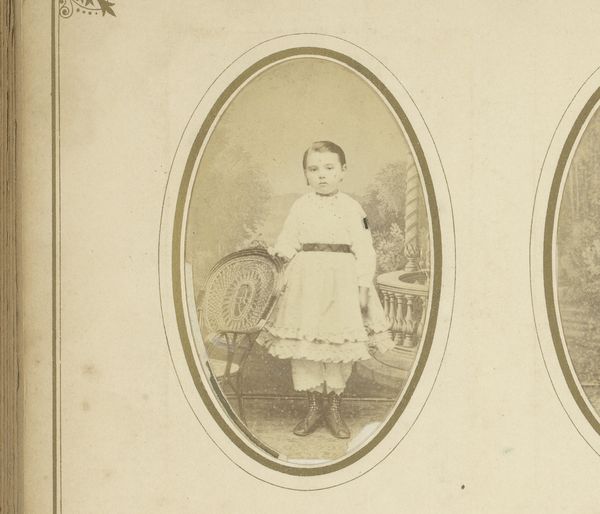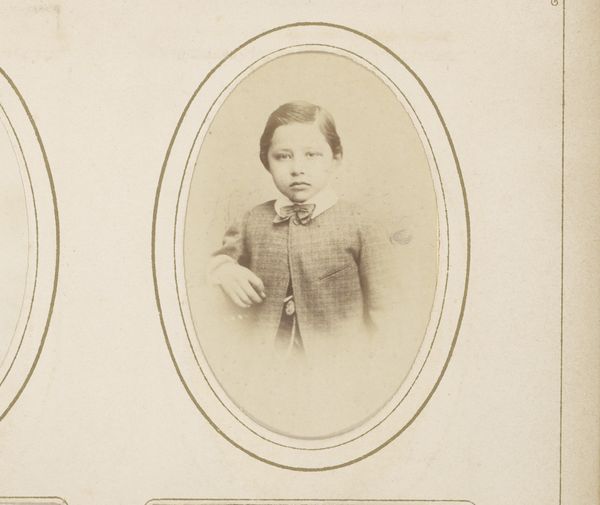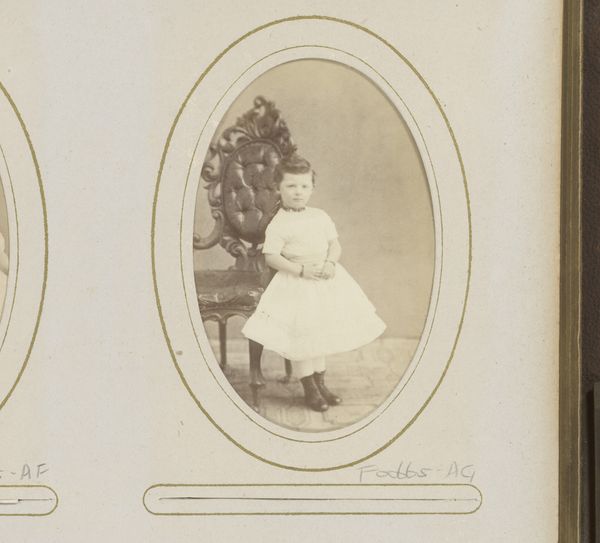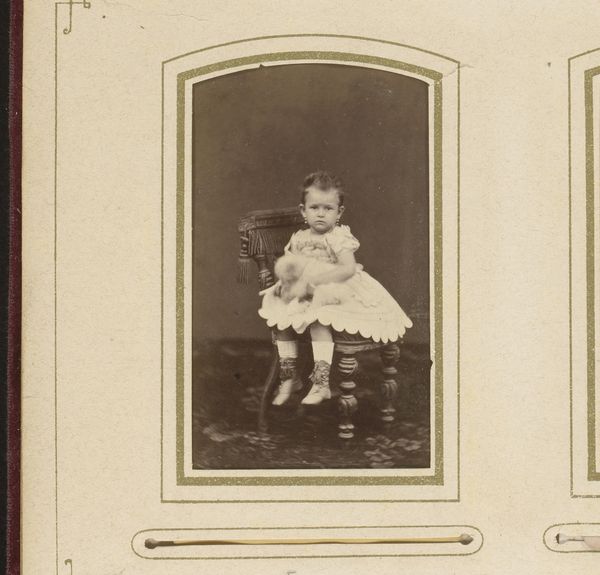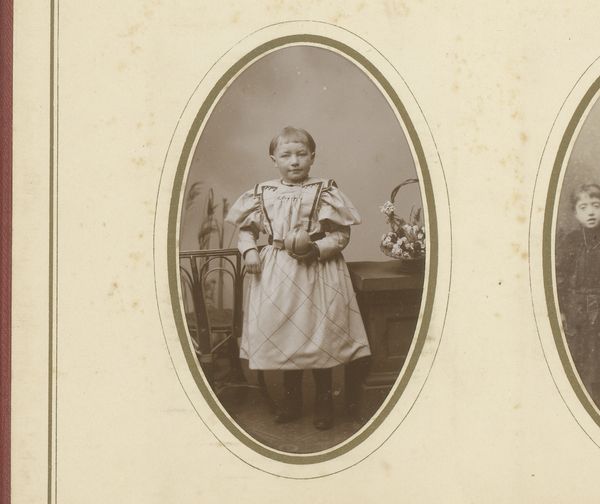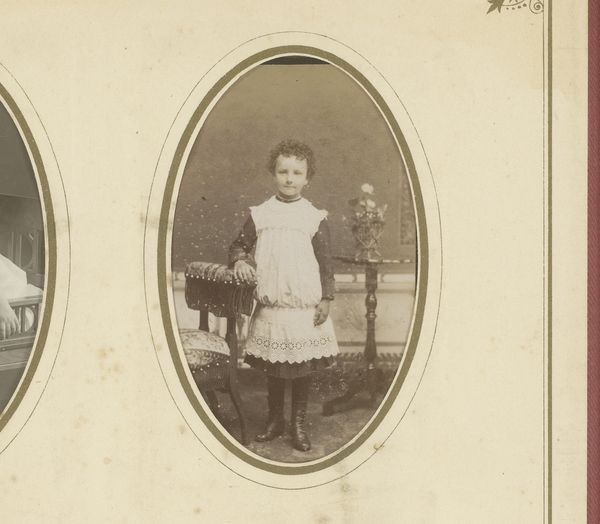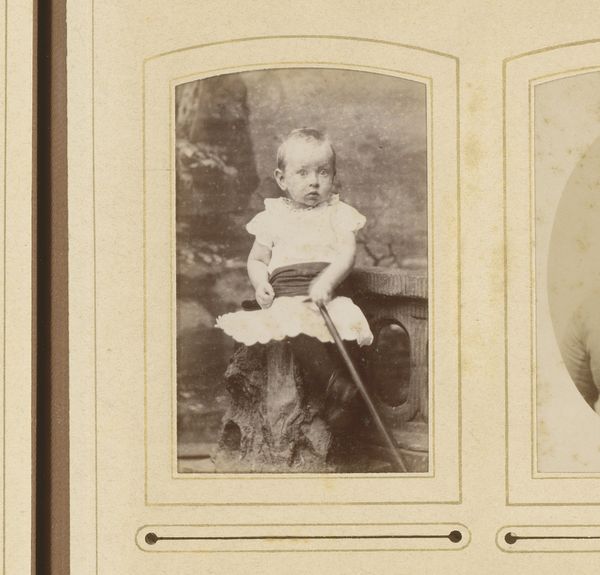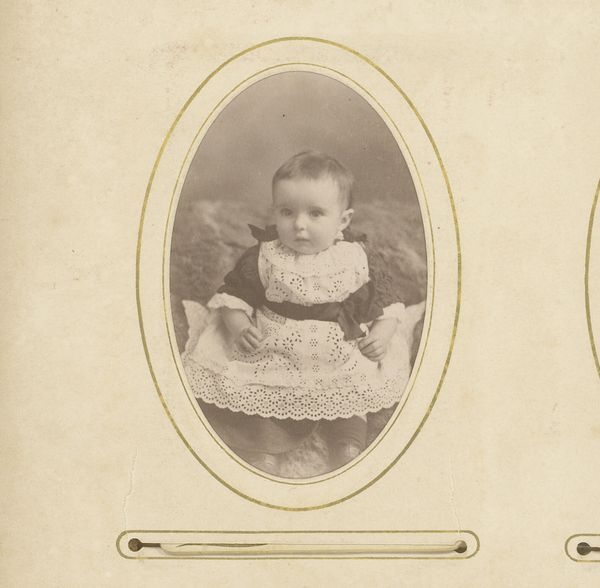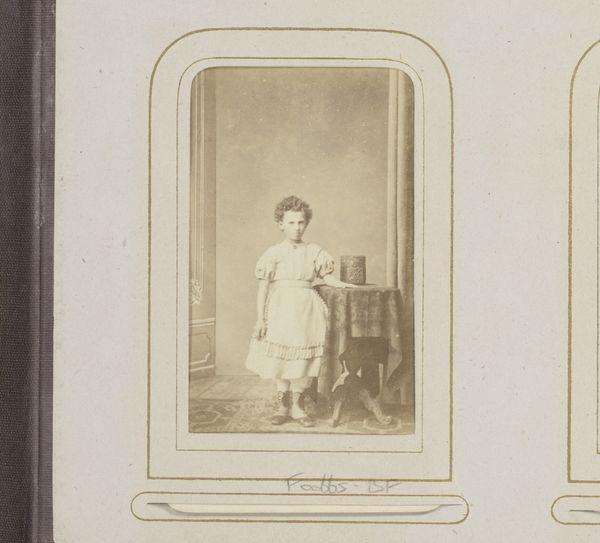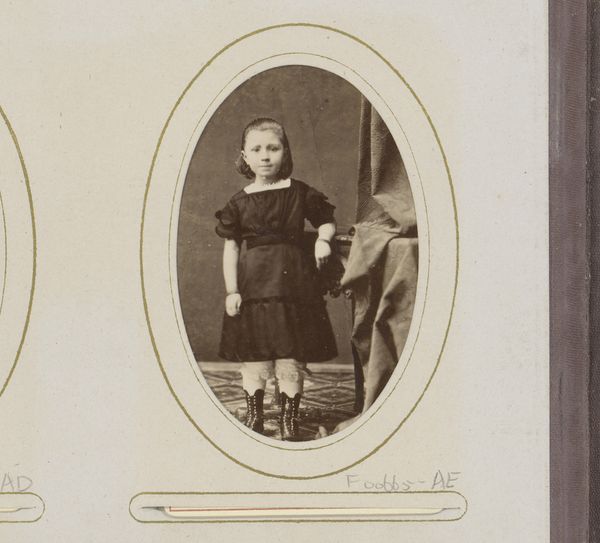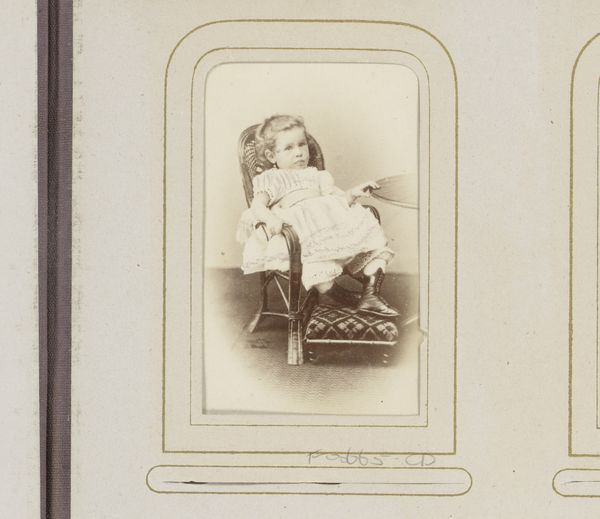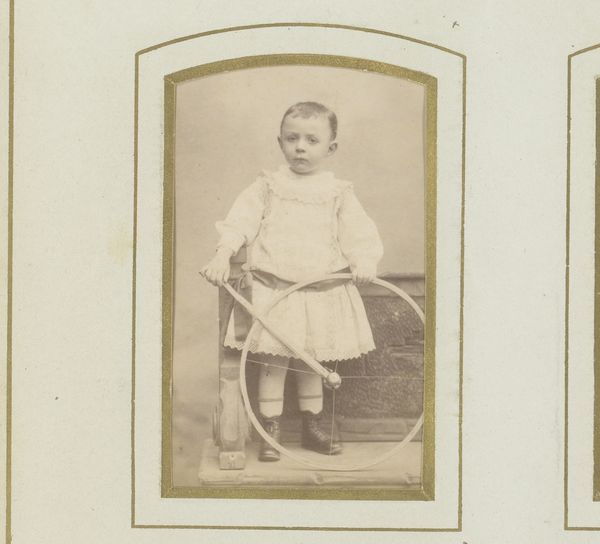
photography
#
portrait
#
photography
Dimensions: height 83 mm, width 52 mm
Copyright: Rijks Museum: Open Domain
Curator: I find this piece immediately intriguing. The oval format, sepia tones... it feels incredibly intimate, like a preserved moment. Editor: Well, it's definitely a product of its time. This is "Portret van een meisje, staand op een stoel," or "Portrait of a girl, standing on a chair," created between 1871 and 1900 by Hendrik Gerard Gerstenhauer Zimmerman. Obviously, it's a photograph. Curator: Yes, the materials immediately suggest the constraints and possibilities of early photography. Look at how the light and shadow interact. There’s a kind of ethereal quality to it, even with its straightforward composition. The subject seems quite serious and formally arranged within the studio. Editor: Agreed. And consider the chair. Is it a prop? A status symbol? Or simply something to keep her steady for the exposure time? Those choices impact our interpretation, considering the labour in constructing a photographic moment during this period and what someone's access and understanding of photography might indicate. Curator: True. The details matter, from the dress she wears, complete with its dotted pattern and white collar, and how all these are rendered. It makes me think of the societal constraints placed upon young girls at the time and what it would require to keep the subject "clean" for presentation. Editor: Definitely. Plus, photographic technology at this time was changing rapidly; consider the economic implications as photography becomes more accessible. We are aware the photograph represents a level of aspiration or importance. The simple staging speaks to the growing middle class who likely adopted the culture around photographic portraiture and albums that would document the different phases in one's life, such as childhood. Curator: You’re right. The cultural weight and significance here are hard to ignore. Ultimately, what stays with me is how Zimmerman captured, for a brief moment, this little girl’s likeness. Editor: Absolutely. Analyzing through this social lens enhances the quiet emotion that it projects as an object, offering a small but concentrated record of 19th-century photographic conventions and technology.
Comments
No comments
Be the first to comment and join the conversation on the ultimate creative platform.
